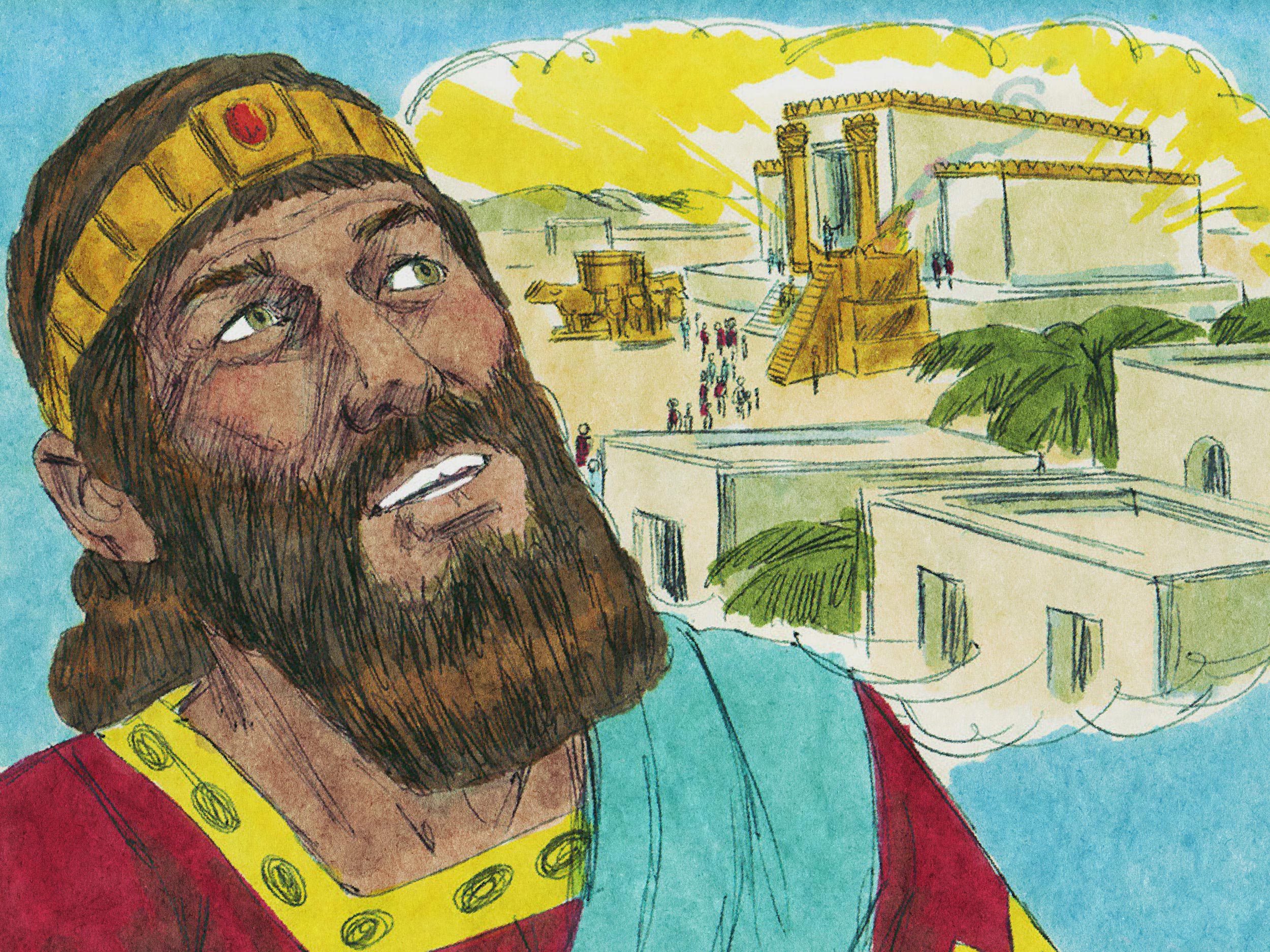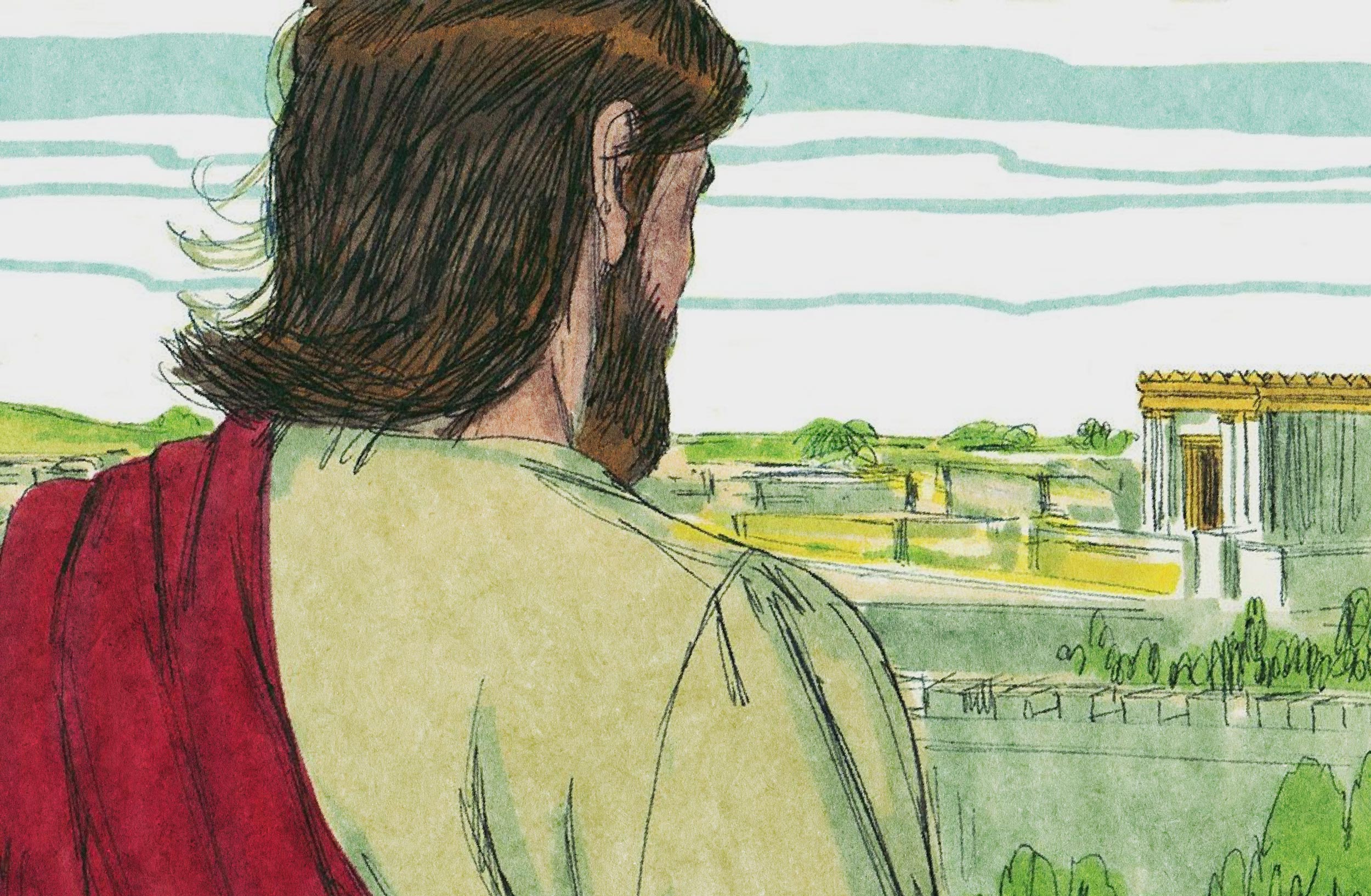
2 Samuel 7 begins with an account of David remarking on his guilt that he lives in such a lavish palace, but the Ark of the Covenant remains in a tent (the Tabernacle). The origin of the idea to build God a temple starts here. David’s prophet, Nathan, tells David, “Whatever you have in mind, go ahead and do it, for the Lord is with you.” But that night the Lord spoke to Nathan in a dream, explicitly telling him to warn David that he was “not the one to build me a house to dwell in” (1 Chronicles 17:4). God says that a temple is not needed and that he has never asked for such a thing.
Go and tell my servant David, ‘This is what the Lord says: Are you the one to build me a house to dwell in? I have not dwelt in a house from the day I brought the Israelites up out of Egypt to this day. I have been moving from place to place with a tent as my dwelling. Wherever I have moved with all the Israelites, did I ever say to any of their rulers whom I commanded to shepherd my people Israel, “Why have you not built me a house of cedar?”
2 Samuel 7:5-7
What comes next is key. God goes on to say that it is his desire that he himself build a house [temple] and that it will be his son, Jesus.
The Lord declares to you that the Lord himself will establish a house for you: When your days are over and you rest with your ancestors, I will raise up your offspring to succeed you, your own flesh and blood, and I will establish his kingdom. He is the one who will build a house for my Name, and I will establish the throne of his kingdom forever. I will be his father, and he will be my son.
2 Samuel 7:11-14
The Lord here is talking about his son, Jesus, and his Kingdom (Luke 1:31-33; Acts 2:29-31; Hebrews 1:5). Notice four key details: God himself will build the “house”. After David has already died, someone in David’s line will be raised up to establish his kingdom. This person will reign on a throne in an eternal kingdom. This person will be God’s son.
The word “house” is referring to a dwelling place for God. The Lord indeed built a dwelling place for himself: the Church. All over the New Testament, we are told that the Church, the people in Christ, are God’s temple and therefore his dwelling place (1 Corinthians 3:16-17, 2 Corinthians 6:16, 6:19; 1 Peter 2:5, Ephesians 2:19-22). Long after David died, just like in Nathan’s prophesy, his descendant established an eternal kingdom. The descendant of David was Jesus, God’s son, and he indeed established an eternal kingdom—the Kingdom of God.
Unfortunately, David makes several key misinterpretations (1 Chronicles 28:5-7). Instead of God allowing himself to build the “house”, David and Solomon build one. Instead of waiting for God to raise up one of his descendants after he died, David appointed his already living son, Solomon, to build a temple. Instead of letting God use his son to build a “house”, David appoints his own son to build a temple (1 Chronicles 22:7-10). God never called Solomon, a man who worshiped pagan gods, His son. David, who already had his mind up before any of this, thought that “house” meant a cedar and stone temple, much like all the other pagan cultures had for their gods to dwell in. Finally, Solomon’s kingdom would not be an eternal one—his kingdom ended spectacularly when the Israelites were thrown into Babylonian exile.
Even though God clearly tells David not to build a temple (1 Chronicles 17:4), he does it anyway.
“PLANNING”
David reports that he is forbidden from building a house to God because “he is a warrior and has shed blood“ (1 Chronicles 28:2-3).1 Despite a temple not being God’s will, and being forbidden from building it, David really wanted to. So knowing he was forbidden from building a temple, instead, he made “extensive preparations” (1 Chronicles 22:5, 14; 29:2-3). What started in David’s heart as his idea, took root and became an obsession. Scripture seems to indicate that David possibly had insomnia over it (Psalm 132:1-5).
The contents of David’s preparations for the temple are extensive (1 Chronicles 22:2-19). David planned out every detail down to the exact weight of every decorative item. He funded the entire construction project, created the exact blueprints, and even gathered all the materials needed (1 Chronicles 28:11-18). Finally, David also picked out the exact location that his temple would be built (1 Chronicles 21:24-26). David knew that God forbade him from building a temple, but because he mistakenly believed that his son would be able to build it, he prepared so extensively that Solomon could carry out David’s will exactly as he envisioned it.
Despite the fact that today we call the building “Solomon’s Temple”, Solomon really had nothing to do with it. Even though David was told that a “house” would be built by God’s son, not David’s son, and that it wouldn’t be built until after his “days are over and he rests with his ancestors,” David wasn’t able to wait—he himself gave the order to start construction of the temple (1 Chronicles 22:19).
The first temple was not God’s will but was the product of David’s flesh.

THE TEMPLES DESTROYED
David’s temple, being the result of his flesh and misunderstandings, did not enjoy the protection of God. Roughly 30 years after it was built it was completely ransacked by a foreign king (1 Kings 14:25-26). Foreign gods were worshipped and child sacrifices were made in the temple (2 Kings 21:3-6). It was completely destroyed by the Babylonians in 586 BC and rebuilt 70 years later. Jesus prophesied that the temple would once again meet its destruction sometime within a generation and he was correct. Clearly, God does not care about a temple building.
Scripture says that the Law (including the Old Covenant and the Temple) was “weak” and “useless“, made “obsolete” and would soon “disappear” (Hebrews 7:18, 8:13). Jesus brought on the New Covenant which replaced the Old. The temple, part of God’s Old Testament concessions, would meet its fate in a few decades, but God clearly wanted to make a statement sooner than that. In the temple was a curtain that separated the “Holy of Holies” (the former place of God’s presence) from the rest of the building. At the moment of Christ’s death, that curtain was torn in two from top to bottom. Now the way into the Holy of Holies was open for all people, for all time. When Jesus died, the curtain was torn, and God moved out of that place never again to dwell in a temple made with human hands (Acts 17:24). God was through with temples and their religious system.
NEVER WANTED IT
The book of Hebrews explains how Jesus is now our only way to God’s presence (Hebrews 10:19-20). The author of Hebrews makes great pains to link Jesus back to the Old Testament but he never uses the Temple to do this, instead, he always uses the Tabernacle (8 times), saying, “the true tabernacle [is] set up by the Lord, not by a mere human being” (Hebrews 8:1-2). The prophet Amos is quoted by James where he says that it would be the Tabernacle that would be rebuilt, not David’s temple (Acts 15:15-18).2
Stephen, while preaching to the Israelites, moments before he was murdered by them, said that the Temple was David’s idea, that it was a result of resisting the Holy Spirit, and that God “does not live in houses made by human hands” (Acts 7:44-51). Today there is no Jewish Temple in existence. God allowed for the existence of a temple building but now we know, through the New and the Old Testament, that God wanted to build his own Temple. That Temple, we are told, is Jesus Christ and his body of believers (John 2:19-22; Matthew 12:6; 1 Corinthians 3:16-17; Ephesians 2:19-22; Revelation 21:22). If Jesus himself and his followers are the True Temple of God, then that means that the Israelite building, modeled after pagan worship, was the False Temple.
The promise that God made to David all those centuries ago was fulfilled in Jesus. David didn’t listen to God, but Jesus came anyway and established his true Temple. God never wanted a Temple building. He put up with it for a time, but now with Jesus, it is done away with once and for all. Enough is enough.
FOOTNOTES
- This illustrates another sin that God accommodated for a time but is now abolished with Jesus: violence.
- “Amos here plainly, spoke of the temple of Solomon as a condition “fallen” from the tabernacle of David. He also viewed the temple of Solomon as “the ruins” of that tabernacle, and he included a promise that “in that day,” that is, in the times of the Messiah, the tabernacle would be rebuilt. Amos wrote these words in the eighth century, and yet at that time when Solomon’s temple had been standing more than a century, he said, “The tabernacle of David is fallen.” That cannot mean that God had replaced it with Solomon’s temple.” James Burton Coffman, The James Burton Coffman Commentary Series: The Historical Books, Commentary on 2 Samuel 7 (Abilene Christian University Press, 1974)